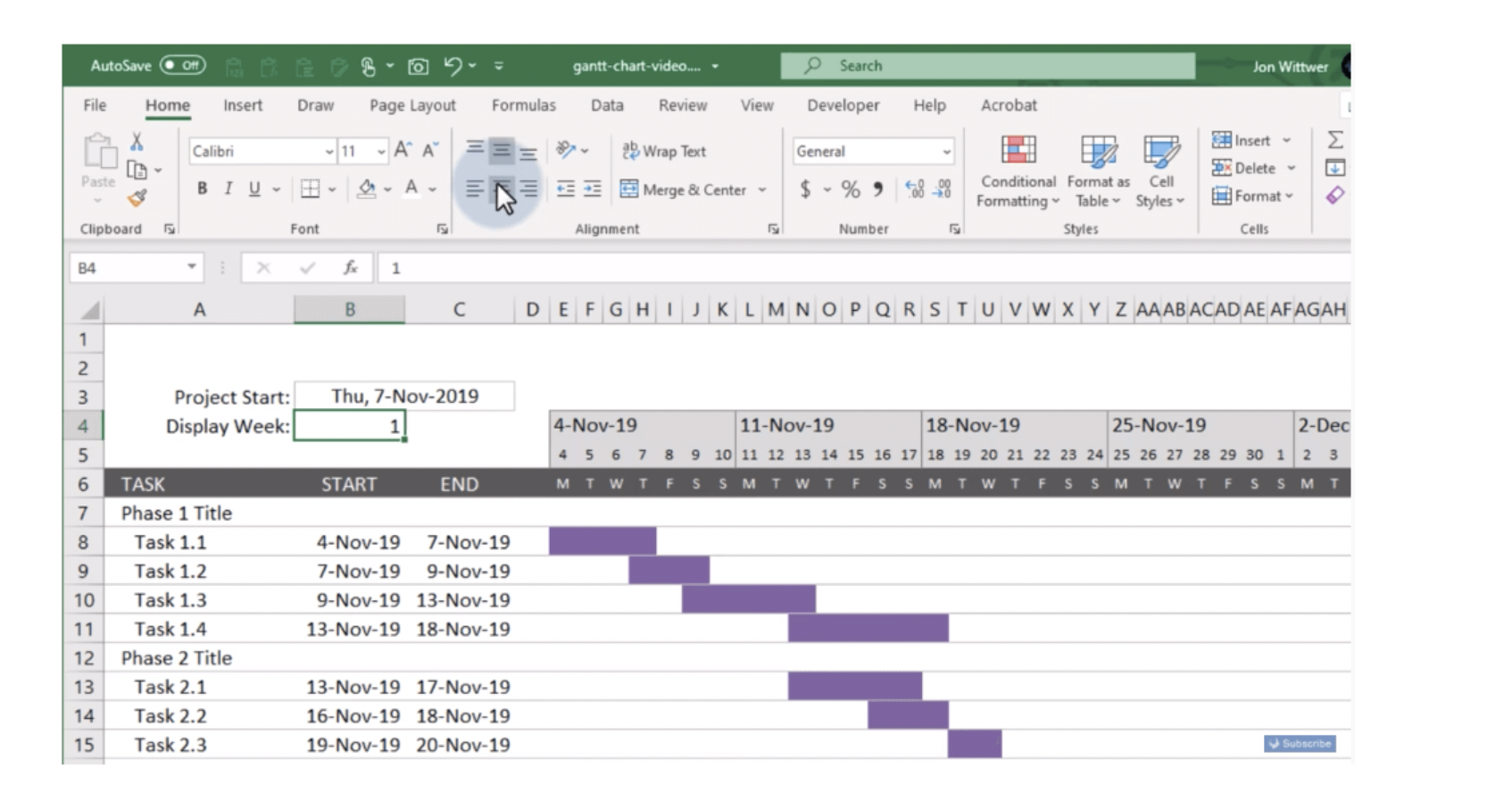

Dragging the divider to the left displays more of the project's task bars in the Gantt Chart.

Dragging this divider to the right reveals more columns of project data in the Gantt table. For example, you can use the divider that runs between the Gantt table and Gantt Chart to adjust the amount of space that each pane occupies. You can also customize what each view shows you. After you practice moving among these views, you can see information about timing, budget, or resource assignments in detail, or you can just look at the big picture. You can modify what you see on-screen in the Gantt Chart view, and Project carries those modifications to other views. Cross- \ in Chapter 3, I explain how to modify the calendars that control a project, and in : Reference chapter 4,1 explain how to set the timescale. To adjust these settings to display or hide nonworking days, you can use the settings on the Non-working Time tab in the Timescale dialog box. Also, note that Project uses default settings for the number of hours in a workday, days in a week, and so on. You can adjust settings for all three timescales in the Timescale dialog box. Double-click the timescale itself to display the Timescale dialog box. In Figure 2-7,1 customized the timescale to show week increments. Note You can customize your timescale to increase or reduce the amount of information that appears on the right side of the Gantt Chart or to show unusual time increments, such as thirds of months.

Multiple timescales help you to see the multiple levels of timing at the same time, such as the day and hour or the month, week, and day The top timescale shows months, and the bottom timescale shows weeks. Project enables you to display up to three timescales along the top of the Gantt Chart - a top, middle, and bottom timescale. Instead of marking off inches, however, this ruler marks off the hours, days, weeks, and months of your project. Think of it as a ruler against which you draw the tasks in your project. The timescale along the top of the Gantt Chart acts like a horizontal calendar. Figure 2-7: A sample project with task details in the Gantt table and bars representing tasks in the Gantt Chart. The Gantt Chart (in the right pane) is a graphic representation that helps you see the timing and relationships among tasks, as shown in Figure 2-7. After you enter task information, the Gantt table (in the left pane) holds columns of information about your project, such as the task name, duration, start date, and more. The Gantt Chart view has two main sections: the Gantt table and the Gantt Chart.


 0 kommentar(er)
0 kommentar(er)
